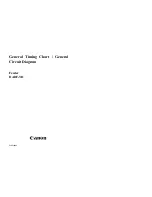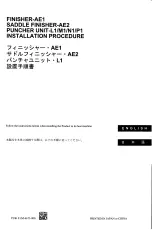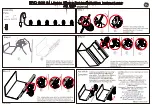
TK 61555-2-MM-EN
25
A
Au
utto
om
ma
attiicc D
De
effrro
osstt:: The controller is programmed to automatically initiate timed or demand
defrost cycles. The controller can be programmed to initiate timed defrost cycles at intervals of 2,
4, 6, 8, or 12 hours. Demand defrost cycles occur if the differences between the return air
temperature, discharge air temperature, and coil temperature exceed certain limits. The unit can
enter defrost cycles as often as every 30 minutes if required.
M
Ma
an
nu
ua
all D
De
effrro
osstt:: In Manual Defrost Mode, the operator initiates a defrost cycle. See “Initiating a
Manual Defrost Cycle”.
N
No
otte
e:: The unit will not perform a Manual Defrost cycle unless the unit has been turned on with
the ON key, the unit is running in Continuous or CYCLE-SENTRY mode (or shut down in
CYCLE-SENTRY Null mode), and the coil temperature is below 45 F (7 C).
The evaporator coil temperature must be below 45 F (7 C) to allow defrost.
The following four defrost timers are used. These timers can be set for intervals of 2, 4, 6, 8 or 12
hours.
•
Defrost Interval In Range with Fresh Setpoint (standard setting 6 hours)
•
Defrost Interval Not In Range with Fresh Setpoint (standard setting 4 hours)
•
Defrost Interval In Range with Frozen Setpoint (standard setting 6 hours)
•
Defrost Interval Not In Range with Frozen Setpoint (standard setting is 4 hours)
This feature allows a shorter Defrost interval to be used when the unit is out of range during a
pull-down and more frequent Defrost cycles may be beneficial.
Normally, longer defrost timer intervals are used for colder loads. The defrost interval may need
to be changed if the unit will not hold the compartment temperature at setpoint.
Use a longer defrost interval if defrost is not being initiated on demand.
Use a shorter defrost interval if defrost is frequently being initiated on demand.
If the unit is in CYCLE-SENTRY Null mode, the engine will start when defrost is initiated. The unit
will stay in defrost until the evaporator coil temperature rises to 58 F (14 C).
Engine Compartment Components
The following maintenance items can be checked visually.
W
WA
AR
RN
NIIN
NG
G
R
Riisskk o
off IIn
njju
urry
y!!
T
Th
he
e u
un
niitt cca
an
n sstta
arrtt a
att a
an
ny
y ttiim
me
e w
wiitth
ho
ou
utt w
wa
arrn
niin
ng
g.. P
Prre
essss tth
he
e O
OF
FF
F kke
ey
y o
on
n tth
he
e H
HM
MII cco
on
nttrro
oll
p
pa
an
ne
ell a
an
nd
d p
plla
acce
e tth
he
e m
miiccrro
op
prro
occe
esssso
orr O
On
n//O
Offff ssw
wiittcch
h iin
n tth
he
e O
Offff p
po
ossiittiio
on
n b
be
effo
orre
e iin
nssp
pe
eccttiin
ng
g o
orr
sse
errv
viicciin
ng
g a
an
ny
y p
pa
arrtt o
off tth
he
e u
un
niitt..
C
Co
om
mp
prre
esssso
orr O
Oiill S
Siig
gh
htt G
Glla
assss:: Use this sight glass to check the compressor oil level. See the
Refrigeration Maintenance section for the correct procedure.
C
CA
AU
UT
TIIO
ON
N
S
Se
errv
viicce
e P
Prro
occe
ed
du
urre
ess!!
M
Ma
akke
e ssu
urre
e tth
he
e u
un
niitt iiss ttu
urrn
ne
ed
d o
offff b
be
effo
orre
e a
atttte
em
mp
pttiin
ng
g tto
o cch
he
ecckk tth
he
e e
en
ng
giin
ne
e o
oiill..
E
En
ng
giin
ne
e O
Oiill D
Diip
pssttiicckk:: Use the engine oil dipstick to check the engine oil level.
R
Re
ecce
eiiv
ve
err T
Ta
an
nkk S
Siig
gh
htt G
Glla
assss:: Use this sight glass to check the level of refrigerant in the receiver
tank. See the Refrigeration Maintenance section for the correct procedure.
















































